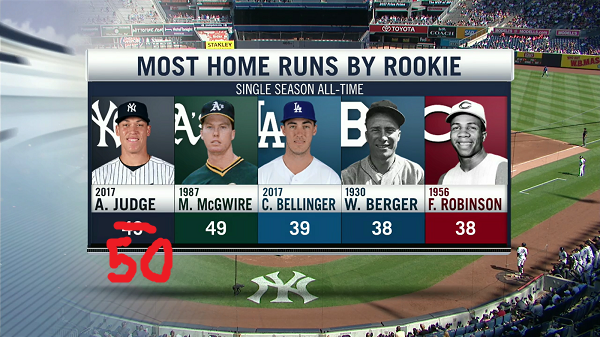It shouldn’t be news that strikeouts have increased at a pretty alarming pace over the last decade. From the end of the last strike through 2007, the league-wide strikeout rate was pretty steady, averaging 16.7%. That is, roughly one in every six plate appearances ended in a strikeout. Over the last decade, the average has reached nearly 20%, including a high of 21.6% this year. Now, more than one in every five plate appearances ends in a strikeout. A strikeout is now 30% more likely than it was a little over a decade ago.
This is a problem with many possible solutions: raising the bottom of the strike zone; lowering the mound; or, my personal favorite, expanding the league. This piece isn’t prescriptive, however. The focus of this piece is to show exactly what the strikeout has replaced, and it isn’t actually all bad.
Because I started this piece by doing some research on the home-run record, we will focus here on the year 2000 as it compares to the present. That season represents what was probably the height of the PED era; it was also the season responsible for the league-wide high in home runs until this year. Because the power numbers between the two periods are similar, a comparison of the seasons creates an interesting vantage point from which to view the role of the strikeout.
Generally, we imagine that players have to sacrifice contact for power. It’s notable, then, that the power numbers of today are equivalent those of the 2000 season even though players are striking out 30% more often now than they did back then. To provide some background, here are some standard numbers from 2000 and 2017.
Comparing 2000 and 2017
| Season |
G |
PA |
HR |
BB% |
K% |
ISO |
BABIP |
AVG |
OBP |
SLG |
wOBA |
| 2000 |
62083 |
190261 |
5693 |
9.6 % |
16.5 % |
.167 |
.300 |
.270 |
.345 |
.437 |
.341 |
| 2017 |
54957 |
173900 |
5753 |
8.5 % |
21.6 % |
.172 |
.300 |
.255 |
.325 |
.427 |
.321 |
As the 20-point difference in wOBA illustrates, overall offensive levels were higher back in 2000. The ISO and BABIP figures are all roughly similar. When a batter hits a ball in play, that batted ball is just as likely to become a hit as it was before. When it lands fair, it’s leading to roughly the same amount of extra bases. All that’s basically the same.
In terms of differences, one finds that this year’s walk rate is a bit lower than in 2000. That has some influence on run scoring, but not at all to the same degree that the increase in strikeout rate has. In effect, 5% of potentially positive plate appearances have been turned into strikeouts. That’s significant. However, while the main complaint about strikeouts is that they lead to fewer balls in play, it isn’t accurate to suggest that every extra strikeout has actually had that effect.
Read the rest of this entry »


